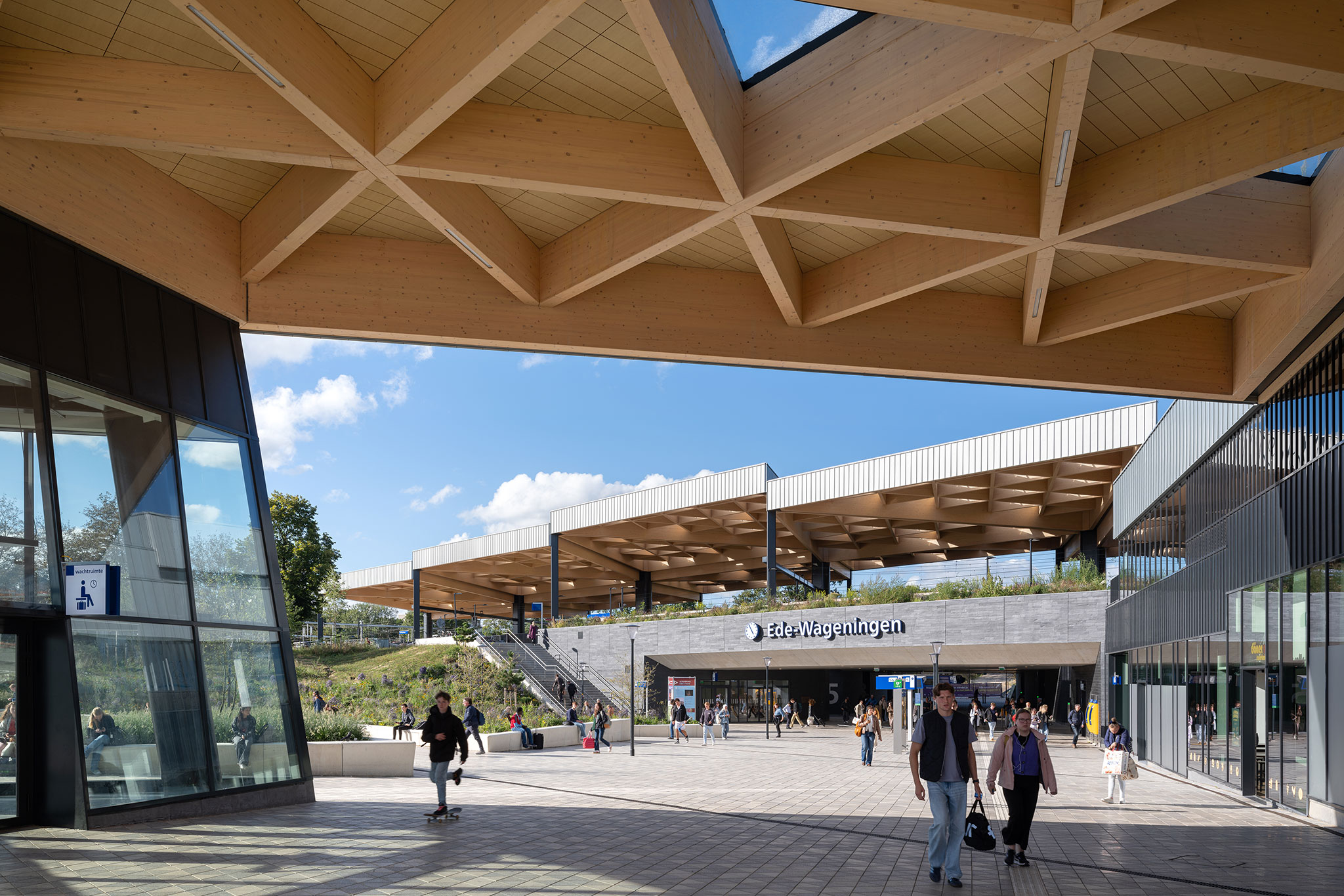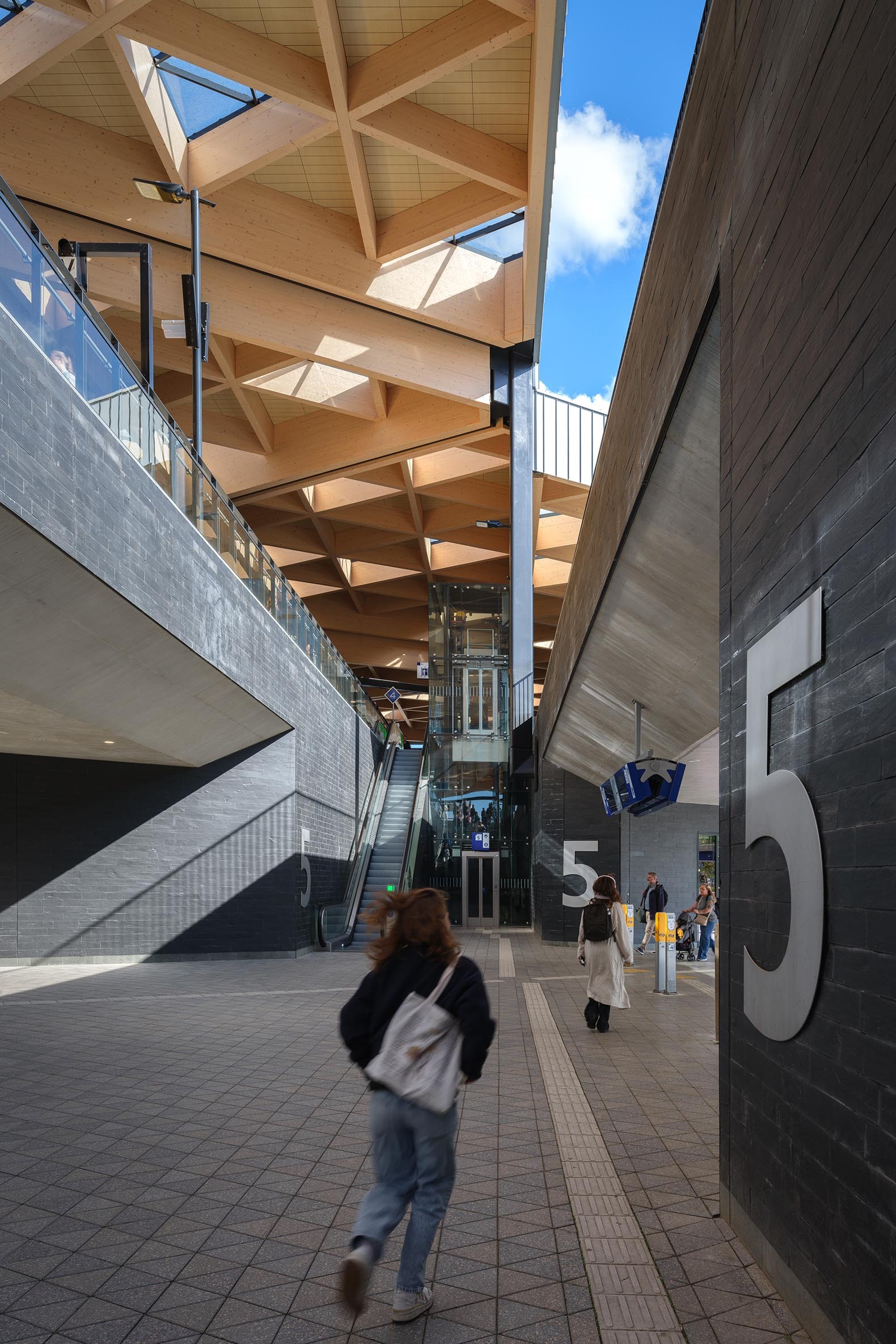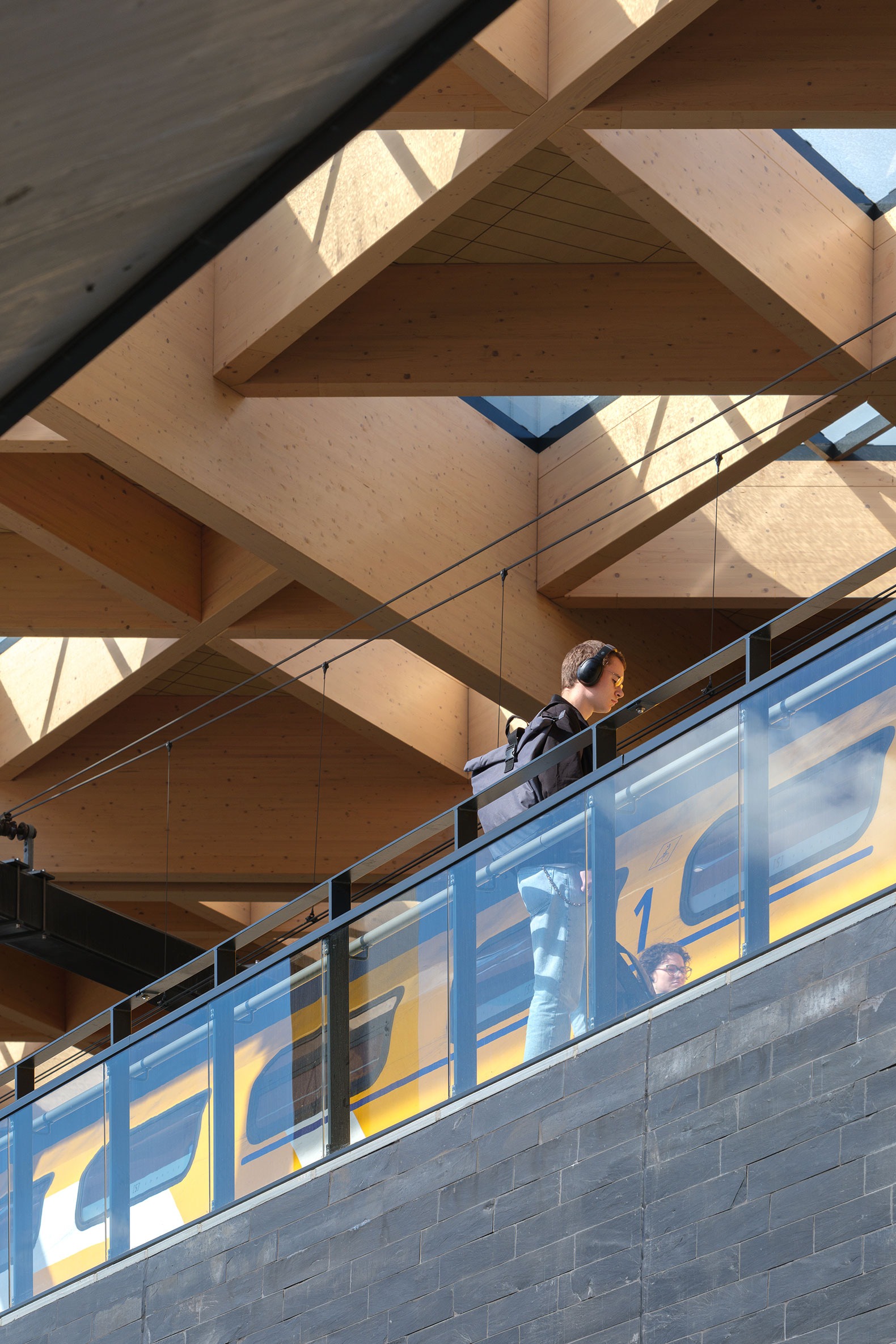
The train station designed by Mecanoo and Royal HaskoningDHV stands out for its simplicity and visual sophistication, functioning as a connecting element for the different quadrants of the transport centre and allowing people to move around quickly and easily.
Inspired by the local Veluwe landscape, the use of complementary natural materials such as wood, stone, glass and steel, together with some architectural details that show the solidity of the whole, make the project not only durable but also timeless, bringing a sense of intrinsic nature to the train station itself.

Ede-Wageningen train station by Mecanoo. Photograph by Stijn Poelstra.
Project description by Mecanoo
Designed by Mecanoo and Royal HaskoningDHV, the new striking multimodal station embraces nature from the moment passengers step out of a train.
Located in the heart of the Netherlands, the city of Ede has a population of almost 120,000 and is famous for its proximity to the Veluwe National Park – a 55 km² natural haven of heathlands, sand dunes, and woodland.
In 2008, ProRail and the Municipality of Ede set out to expand the Ede-Wageningen train station in the face of planned property development nearby, estimated to increase passenger numbers to around 25,000 passengers per day by 2030. The new station design would provide expanded services, functionality and safety for passengers, and sustainability in design.

Designing a canopy of leaves
As the most iconic element of the station’s design, the wooden roof mimics a tree canopy. It boasts visual simplicity and sophistication, uniformly connecting the various quadrants of the transport hub, ensuring orientation from all sides. The roof is composed of 23 wooden triangles, each measuring 27 metres long. Almost every node and column faces a different direction, carrying a significant force load while still maintaining the architectural ambition. The triangular skylights allow daylight to fall on the platform and lead passengers to the pedestrian tunnel.
Inspired by the local Veluwe landscape, the use of complementary natural materials such as wood, stone, glass and steel, together with the robust architectural detailing, make the design not only durable but also timeless, bringing a sense of nature into the train station itself.

Creating a sense of place
Alongside beautiful design, functionality was also at the core of our combined approach. The team connected all elements of the passenger journey, embedding intuitive spatial wayfinding into the designs and enabling people to move around quickly and easily. By embracing the station’s surroundings, it was possible to create a true sense of place from the moment passengers step out of a train.
“Our aim was to make this design sustainable on many levels – ultimately encouraging greater use of public transport for today and the years to come. By creating seamless transitions between numerous modalities – including cars, bicycles, and pedestrians – our design with changing daylight and different materials, this is public transport that passengers can truly enjoy. We have created a place where they feel comfortable in a calm and peaceful environment; a place to be, rather than just a place to go.”
Kirsten Colenbrander, Architect at Royal HaskoningDHV.
Protecting endangered species
Within the designs, the team also had to take into consideration specific ecological considerations. Adaptations were made to keep a substation in place to act as a bat cave – along with optimised lighting. Eumodicogryllus Bordigalensis, a rare species of crickets only living on railway tracks, were also accommodated – they were the starting point of the landscape design alongside the tracks, to ensure their habitat was retained.

Prioritising comfort and safety
The station has been designed for the safety and comfort of travellers. Retail units are located at the south entrance of the pedestrian tunnel that gives access to the platforms, and from the platforms themselves, all transport modes can be seen: the station square, bus square, drop-off zone, taxi, and bicycle parking.
A large indoor bicycle parking facility has been integrated into the design and can accommodate up to 5,500 bicycles, together with a pedestrian and cycling bridge to the east of the station – which provides an unrivalled view of the Veluwe. Through the smart arrangement of functions, commuters can easily transfer between different modes of transport, making Ede-Wageningen a true green transport hub.

The new station is already open for passengers. The development of the parking garage and landscaping, plus a new pedestrian and bicycle tunnel between Ede and Wageningen under the railway is currently under construction, expected to be complete in 2026. Together, the designs will put Ede-Wageningen train station on the map, solidifying its position as the gateway to the Veluwe National Park.
“The station’s design is inspired by the Veluwe National Park. The composition of the timber canopy, stepping up and down, is reminiscent of the experience under the canopy trees in the Veluwe forest. Our goal was to design an efficient transportation hub, but also to connect people with nature, offering a very pleasant atmosphere for all users.”
Rodrigo Louro, Associate Architect at Mecanoo.























































